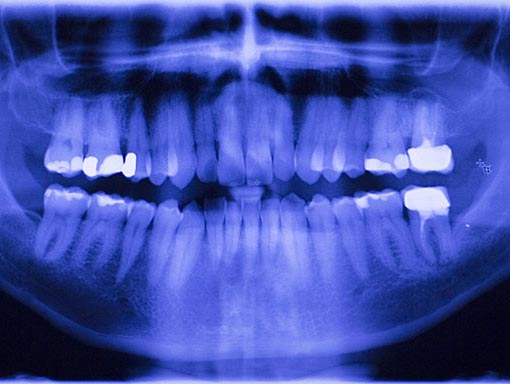“X-rays are energy in the form of waves, identical to visible light. In fact, the only difference between light and x-rays is that light doesn’t have enough energy to go through your body and x-rays do. Both can make an image on photographic film, so both types of energy are used to make pictures; light makes photographs of the “outside” of objects, x-rays make pictures of the “inside” of objects, including your body.”
There is a perception that digital x-rays are bad for you. Yes, cancer is on the rise. Yes, certain doses of radiation are bad for you. And yes, dental x-rays are recommended about 1-2 times per year.
But….did you know that the amount of radiation that you are exposed to in digital x-rays in a dental office are LESS than the amount you are exposed to when outside in the sun for the day!
The American Dental Academy states that “Radiation exposure associated with dentistry represents a minor contribution to the total exposure from all sources.”
“Advances in x-ray equipment, especially film technology, allow your dentist to get a good x-ray image using much less radiation than was previously required. A typical dental x-ray image exposes you to only about 2 or 3 mrem. The National Council on Radiation Protection (NCRP) says that the average resident of the U.S. receives about 360 mrem every year from background sources. This comes from outer space, radioactive materials in the earth, and small amounts of radioactive material in most foods we consume.”
Let’s take a closer look.
Benefits of x-rays:
- View of jaw bone
- View health of roots of teeth
- View of bone surrounding teeth
- Check development status of teeth
- Monitor general health of mouth
- See abscesses or infections
- Catch cavities/decay from spreading to other parts of body
- Minimal radiation exposure (2-3 mrem)
Negatives of x-rays:
- Additional radiation 1-2 times per year
When using digital x-rays in a dental office, there are certain safety precautions that medical professionals take to minimize radiation (like wearing a lead coat, angling the x-ray correctly, and minimizing them). Plus, keeping up with technology is also CRITICAL. Each year, the new x-ray machines decrease the amount of radiation that they expose…so it is minimal!
Here are some resources and our article sources:
http://www.physics.isu.edu/radinf/dental.htm
http://www.ada.org/en/member-center/oral-health-topics/x-rays
http://www.huffingtonpost.com/thomas-p-connelly-dds/dental-xray-radiation_b_960573.html

